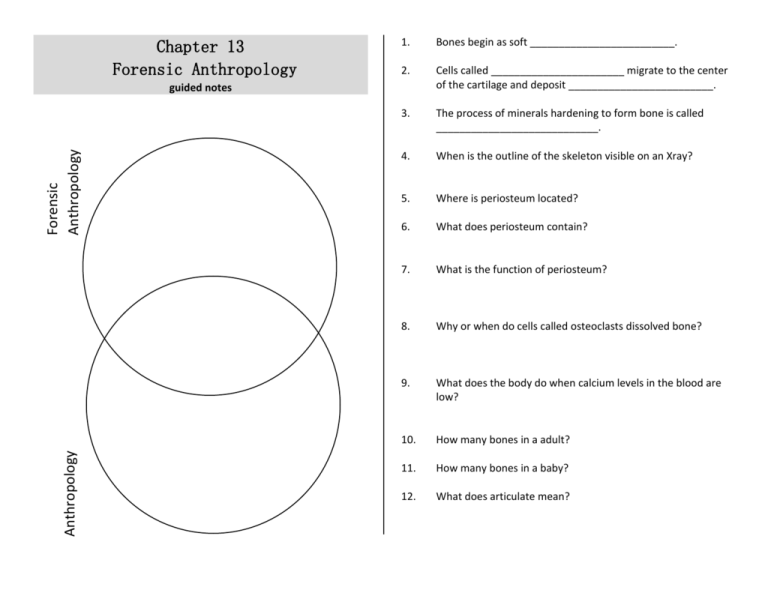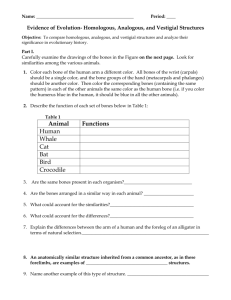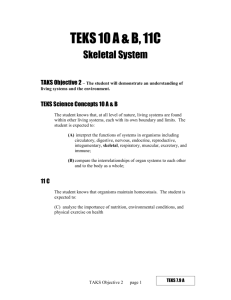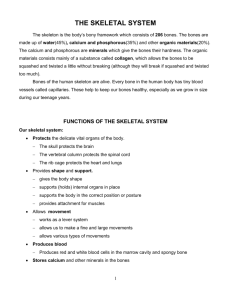Guided notes Ch 13
advertisement

Chapter 13 Forensic Anthropology 1. Bones begin as soft _________________________. 2. Cells called _______________________ migrate to the center of the cartilage and deposit _________________________. 3. The process of minerals hardening to form bone is called ____________________________. 4. When is the outline of the skeleton visible on an Xray? 5. Where is periosteum located? 6. What does periosteum contain? 7. What is the function of periosteum? 8. Why or when do cells called osteoclasts dissolved bone? 9. What does the body do when calcium levels in the blood are low? 10. How many bones in a adult? 11. How many bones in a baby? 12. What does articulate mean? Anthropology Forensic Anthropology guided notes 13. Connective tissue that wraps the ends of bone is _______________________. 23. How can bones tell if a person is left handed? 14. Connective tissue that connects muscle to bone is ______________________. 24. How can bones tell if a person did physically hard work? 15. Connective tissue that connects bone to bone is ______________________. 25. What would the bones in a pitcher’s throwing arm look like? 16. What happens to our bones after age 30? 26. What would the connective tissue in a soccer player’s knees look like? 17. How can we try to counteract this? 27. 18. What condition results when bones have lost calcium? Why is a male skeleton thicker, rougher, and more bumpy than a female skeleton? 19. What happens when vertebrae lose calcium? 20. The number of bones and their condition can tell an investigator about a person’s __________, ________________, and whether they ________________ _________________________________. 28. List three visible differences between a male and female skull: 21. 1. 2. 3. What does the term osteobiography mean? 29. 22. What does a loss of bone density signify? List two visible characteristics of a female pelvis. 1. 2. 30. One way to estimate age is to look for ________________ marks on the skull. 31. A person that has finished growing will not have a visible ___________________ line. 32. Measuring bones like the _______________ or __________________ can estimate the height pf a person. 33. List five skeletal differences that can be used to determine race: 1. 2. 3. 4. 5. 34. Facial reconstruction is possible by using measurements of _________________ depth that originally were obtained from cadavers. 35. What is video superimposition? 36. Mitochondria contain DNA inherited only from your ___________________. 37. Why is mDNA used in skeletal analysis? 38. _______________________ and _________________ often damage bones that are exposed to the elements for long periods of time. 39. Skeletal trauma analysis can tell the difference between: 40. How is bone damage from a blunt object different than bone damage from a sharp object? 41. In what pattern do living bones shatter? 42. In what pattern do old bones often break?











